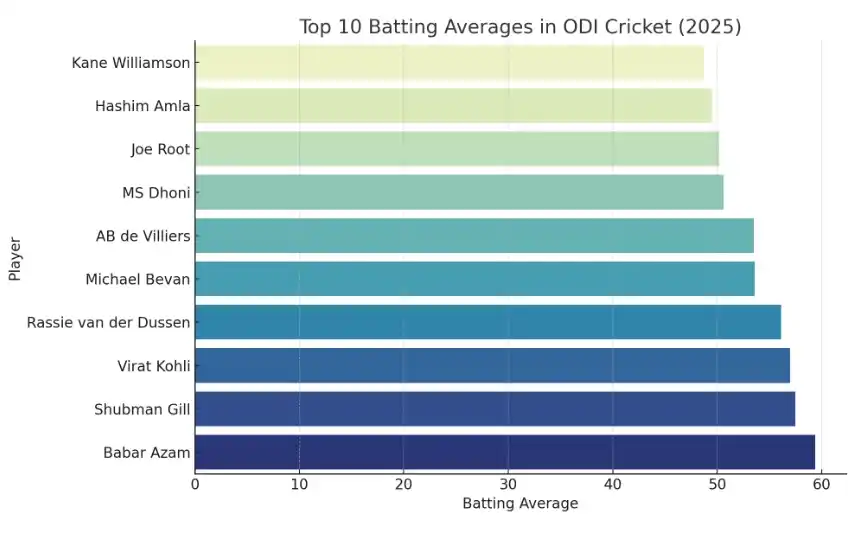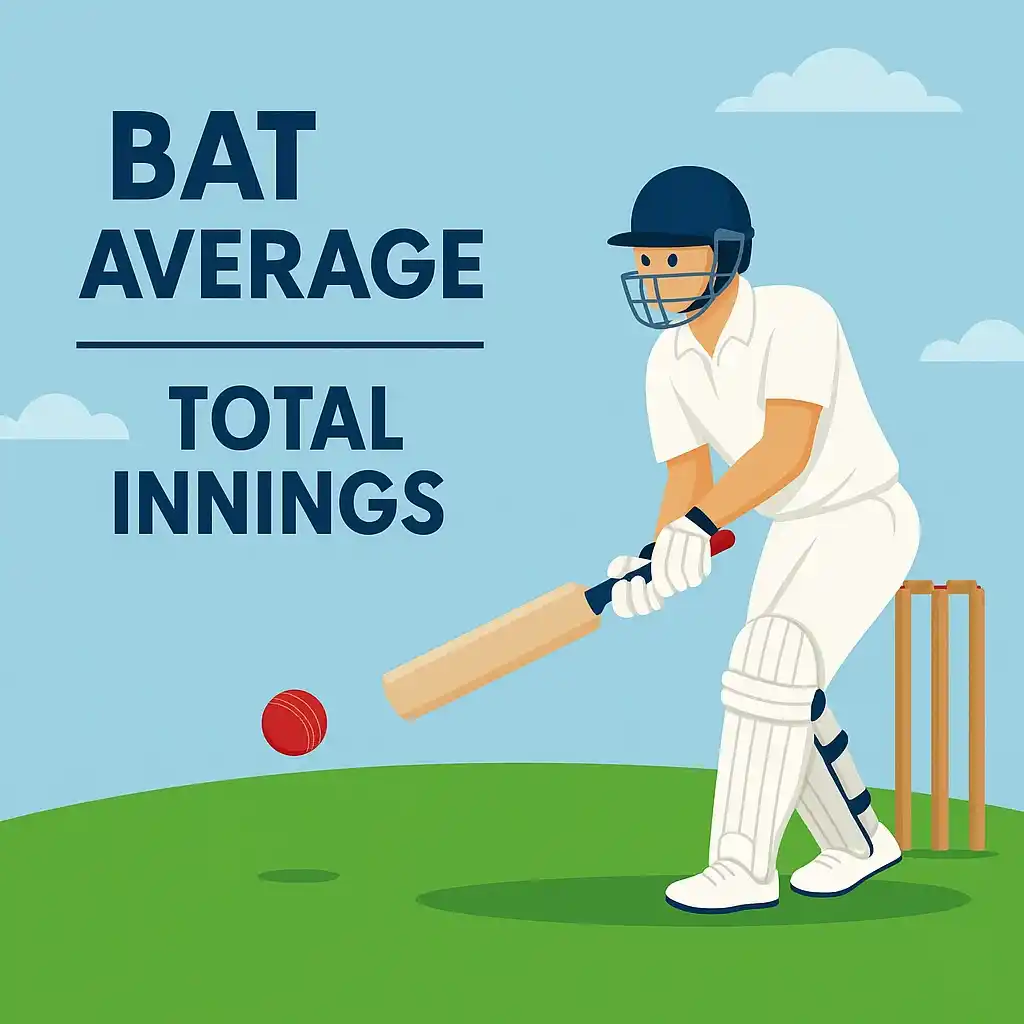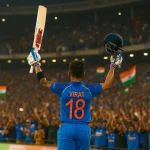
In cricket, consistency has a profound yet understated impact. Unlike the loud fireworks finales and the explosive centuries that grab attention, it is the consistent performers who capture the foundation of the entire team. “The most average in ODI history” is not a casual statement; it relates to remarkable scoring averages that reflect consistent performance, steadfast discipline, stoicism, and composure in tense situations. Yes, these attributes often go unnoticed since they don’t always accompany hefty sixes or attention-grabbing clips.
Achieving a high batting average certainly isn’t about one-off high-scoring innings. It is a function of bailouts and aiding the innings cognizantly, smartly chasing runs, knowing the correct moments to raise the tempo, and maintaining control when needed. This is a strategic characteristic generally associated with sharp-minded players who gauge the game not ball by ball, but in spells and in shifts of momentum. Let us further explore this intriguing figure, who possesses it, why, and its significance.
ODI Batting Average: More Than Just a Stat
What exactly is a batting average in ODI cricket? It’s simple on paper: total runs scored divided by the number of times a batter gets out. But it gets deeper. Not all runs are equal. A 70 in a tense chase on a spinning track means more than a flat-pitch century. And that’s where the best averages shine — not just in bulk, but in context.
Take Michael Bevan, for example. One of the earliest icons of this metric. He wasn’t explosive. He was composed. Knew how to drag a team across the finish line. He ended his career with an average of 53.58, back in the early 2000s — when totals barely passed 250 on average. That’s like averaging 65 in modern-day terms.
Now, the game’s changed. Modern batters have more tools, more data, but also more pressure. And still, some manage to stay ahead of the curve. Let’s look at who does it best.
Top 10 Batting Averages in ODI History (Minimum 50 Matches)
| Rank | Player | Matches | Runs | Average | 100s | 50s |
| 1 | Virat Kohli | 292 | 13848 | 58.67 | 50 | 72 |
| 2 | Babar Azam | 117 | 5729 | 57.50 | 19 | 32 |
| 3 | MS Dhoni | 350 | 10773 | 50.57 | 10 | 73 |
| 4 | AB de Villiers | 228 | 9577 | 53.50 | 25 | 53 |
| 5 | Shubman Gill | 44 | 2271 | 61.65 | 6 | 13 |
| 6 | Joe Root | 171 | 6522 | 48.20 | 16 | 38 |
| 7 | Hashim Amla | 181 | 8113 | 49.46 | 27 | 39 |
| 8 | Michael Bevan | 232 | 6912 | 53.58 | 6 | 46 |
| 9 | Kane Williamson | 165 | 6554 | 47.83 | 13 | 42 |
| 10 | Ross Taylor | 236 | 8607 | 47.55 | 21 | 51 |
What Sets These Players Apart?
Start with Kohli. The man has redefined consistency for a generation. Fifty ODI hundreds. But more than that — look at how he builds an innings. He rarely wastes starts. He doesn’t throw it away at 40. And his chases? Ruthless. His average isn’t just a number — it’s a reflection of a process he’s mastered. Then there’s Babar Azam, his elegance rivaling Kohli’s work ethic. He may not be as aggressive, but his shot selection is elite.
MS Dhoni, on the other hand, represents clutch. Finishing games with a calm head and a strong bottom hand, Dhoni’s average is inflated not by big knocks, but by finishing games unbeaten. He knew when to go big and when to absorb pressure.
Then there’s someone like Shubman Gill. Only 44 matches in, and an average north of 60? Sure, it’s early. But the signs are strong — fluent strokeplay, strong temperament, and a modern mindset that fits ODIs like a glove. Time will test his place, but he’s on the right trajectory.
Consistency Across Eras: Adjusted for Conditions
| Player | Era Played | Notable Challenges | Format Evolution |
| Michael Bevan | 1994–2004 | Slower pitches, low totals | Pre-powerplay aggression |
| AB de Villiers | 2005–2018 | Reverse swing, T20 era shift | 300+ totals become norm |
| Virat Kohli | 2008–2023 | Flat decks, higher targets | Frequent high-pressure chases |
| Babar Azam | 2015–present | Spin-heavy pitches, criticism | Anchoring amidst chaos |
| MS Dhoni | 2004–2019 | Death over specialists rising | Finisher’s era |
These numbers don’t float in a vacuum. Bevan played on pitches where 230 was defendable. Kohli and Babar walk into matches knowing anything under 300 might not cut it. AB de Villiers could shift gears like no one else. Dhoni turned finishing into a science. Different timelines, different styles — but the same DNA: reliability.
Why Average Still Matters in the Age of Strike Rates
Cricket fans love to talk about strike rate these days. And they should — in T20s, it’s often the defining stat. But in ODIs, balance is key. A guy who scores 100 off 100 isn’t less valuable than someone who blazes 80 off 50. Why? Because context is everything. A century while anchoring a collapsing lineup carries more weight than a flashy cameo in a flat chase.
Batting average rewards those who finish innings. Who play the long game. Who absorb pressure when wickets fall. When a batter averages over 50 in ODIs, it means they’re not just racking up runs — they’re doing it while giving their team a chance to win.

So Who’s the Most Reliable?
It depends on how you read it. Kohli has the numbers and the impact in pressure moments. Bevan did it without fanfare but rescued Australia time and again. AB did it with flair. Dhoni with coolness. Babar with precision. There’s no single winner — just different versions of excellence. And maybe that’s the point.
Closing Remarks
Discussing the mean value of an ODI player’s average is certainly not an insult aimed at a player. In fact, it celebrates those who consider the accumulation of runs as routine, rather than an extraordinary event. They are the players you can bank on at 20 for 2, at 200 for 4, in World Cup finals, on foreign soil, and during intense chases when the match is on the line. It is these players who are seldom shaken.
The evolution of the format, along with the balance of cricket’s split tendency, incorporates one key factor: a significantly above-par average will always hold value, as it reflects the player’s contribution and how far ahead of the pack that player is.

Meet Arjun Kushaan, a passionate cricket analyst at The Cricket24x7. From street matches in his childhood to competitive college tournaments, cricket has always been a central part of Arjun’s life. With a strong background in data analysis and a natural affinity for numbers, he brings a fresh, analytical lens to the game. At The Cricket24x7, Arjun blends his deep love for cricket with his data-driven approach to deliver detailed insights and well-rounded coverage for fans of the sport.






